#art in the age of the algorithm
Explore tagged Tumblr posts
Text
Is there any fan project going on for Vows & Vengeance? Like, animatics and such?
#dragon age vows & vengeance#dragon age veilguard#dragon age#dragon age the veilguard#since twitter was banned from my country I lost contact with the fandom 😭#I'm catching up here#but tumblr's algorithm shows me mostly old posts#I want to make some boards inspired by the episodes but I'd love to know if there's any artist or collab to support#non art post
18 notes
·
View notes
Text
No more posting art online I just want to paint shitty things and show them off at the local farmers market.
#only half ironic here. I haven’t posted a finished piece here in ages and tbh it’s just becoming less and less desirable#like I get that these ai scalper algorithms have zero interest in me specifically but still#if anything. it’s just pushing me to make less palatable art?#I want to make unmarketable shit.
2 notes
·
View notes
Text
TL;DR: in this post, i wax on about the abandoned concept album/multimedia project Lifehouse by Pete Townshend/The Who in the context of algorithms and artworks
people on Twitter aren't understanding that this is an ad for a scifi novel. it sounds interesting, to a degree.
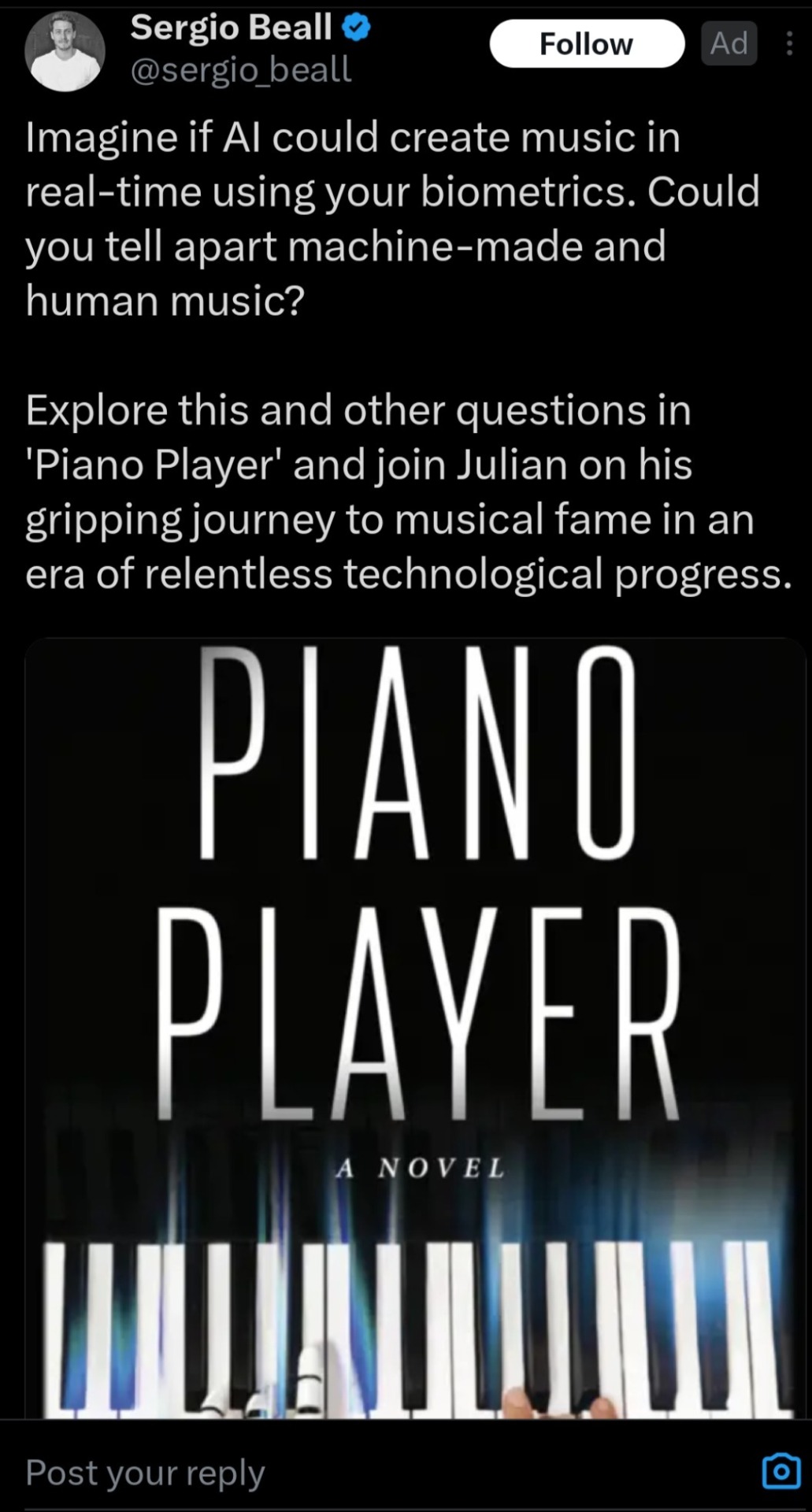
the first sentence reminds me of [The Who's] Pete Townshend's Lifehouse, still one of the most fascinating musical experiments i've ever read about.
i wish i knew about all that back when the Lifehouse Method website was a thing. for those unaware, it was a site created by Pete in conjunction with composer Lawrence Ball and software developer Dave Snowdon in which someone could input their personal data and generate "authentic musical 'portraits,'" pieces of music customized via algorithms that work based on whatever data you input. if you know anything about The Who, you'll probably recognize this as a facet of what would eventually become the album Who's Next, Lifehouse, a huge multimedia project involving a rock opera album, live performances with audience participation and complex tech on stage, a movie, who knows what else.
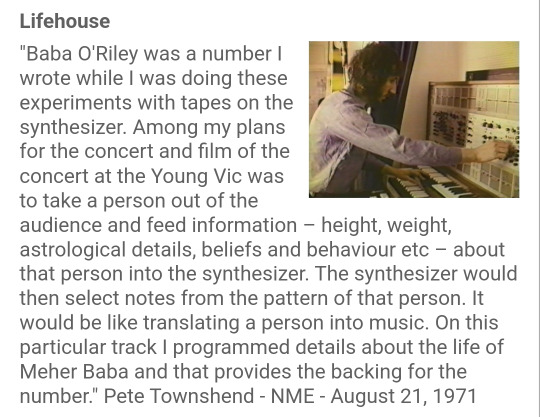
https://archive.is/8tYoM
i've always wished i could do one of these "musical portraits." i remember when I first heard about algorithmic (i refuse to call it AI because it isn't true AI) music generators, this was the first thing i thought of. back when they were in a rudimentary state, i played around with one for my own amusement (not for my own music, all that comes from my own head unfortunately for you), and while it was fascinating, it didn't go far enough in the direction i hoped. thinking of OpenAI's MuseNet, it takes a few notes worth of MIDI data & a style suggestion and then kinda randomly guesses what would be a good fit after those notes.
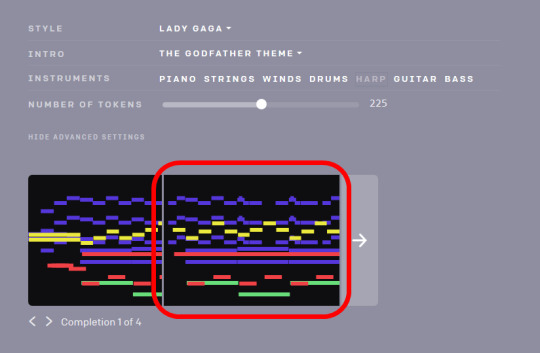
<image sourced from https://gigazine.net/gsc_news/en/20190426-muse-net>
and y'know, it makes for some fun meme videos:
youtube
youtube
youtube
<shoutout to the papaya>
but you can also see it only goes so far, and still requires musical input. it isn't quite on the level of being usable for much. and it really isn't quite the same. it's using inputted data, but not, say, biometric or biographical data. it's musical parameters that are being input as the data.
i really want to one day see a true realization of Lifehouse. one of my wildest goals is to be the one to do that. admittedly, i feel like in the current artistic climate the art world might no longer be ready for it; people would see it, instantly think "AI ART EW," and back away. but in this case, i don't feel like that's a fair assessment of what the concept is. the idea was to find each person's unique signature melody via these musical portraits. it isn't meant for anything really beyond personal identification, when it comes down to it. it fascinates me from a musical standpoint, and as a person who holds a psychology degree. imagine what someone can learn about oneself via this process! would your musical portrait be different at different points in your life? what could you tell about your personality from a single melody, or about your life history, or your beliefs and values? how would all of that reflect in your music? what genre is your soul? could a musical portrait truly capture any of that? with sufficiently advanced tech, sure, but idk if we're there yet.
heck imagine the therapeutic implications! imagine this tech being used in an art/music therapy setting, in which you work with a therapist to input your data, get a melody, and then use that melody with whatever form of musical expression you prefer (e.g. if you prefer to play the piano, guitar, a DAW, etc). what would you and your therapist be able to learn about you?
i truly do believe that, when it comes down to it, everyone has their own musical identification, "a song in their heart" if you will. i wish to expose people's hearts to get that music out, so that people may hopefully understand themselves better.
we might actually be at the level of tech necessary to truly realize a project like Lifehouse, but the tech isn't being used in this way. our current tech relies on predictive algorithms that kinda mostly draw on established musical forms, tradition, and there are only so many notes in the musical alphabet and only so many combinations and permutations thereof. a true realization of this tech would work, say, maybe in a similar way to how Pokémon speedrunners essentially break the game and essentially reprogram it to do what they want via a series of unexpected inputs. arbitrary code execution is what that's called, and i bet a similar function might help greatly in creating a uniquely generated musical portrait. because, when it comes down to it, are we not all Glitch Pokémon who cannot be contained by the boundaries of our programming?
youtube
anyway that was a long ramble. feel free to gimme feedback like you're a guitar held up to an amp or feedback like an echo chamber, whichever you prefer. this post idk if it'll make both pro & anti AI people mad or not, but that's what happens when your position on a thing is more complicated than a simple binary.
currently homeless still, so please help me if you can:
My partner's donate links are here: https://linktr.ee/IzukuLeeYoung. that's the best place you can send us money to keep us in our current hotel room and off the street.
https://odiohi.me/pages/product-categories - if you wanna help me by buying my wares (including my music)
To support me directly:
https://ko-fi.com/NoraQRosa
https://cash.app/NoraQRosa
https://patreon.com/NoraQRosa
#artistic musings#essay#“AI art” really isn't true AI. when we finally realize that true AI actually lives and exists among us...#...you know we're gonna see them take offense to how we currently talk about AI and algorithms and be very upset#people don't care because they don't see AI as people but as new slaves.#they don't want artificial intelligence. they want custom-made servants.#we aren't at a point where we see true AI making art#we only currently see uncreatives abusing algorithms and then going “look i did this” when all they did was type out a few words.#at least Lifehouse was for a purpose and not for techbros to use and abuse!#it actually has a fascinating concept that i fear has been corrupted in this day and age. we need to fix that.#homeless plural trans queer artist in need of dire mutual aid#Youtube
2 notes
·
View notes
Text
Tbh i don't know what to think of AI art anymore. I don't find any utility, personally, in centring the discussion on law and copyright; there are far more interesting things to discuss on the topic beyond its use as a replacement for human artists/workforce by the upper class
#rambling#i am not saying i think using AI image generation to replace human artists and leave them jobless is a good thing - i do think that is bad#there are real concern on the ethics of its use and creation of image generation models#but i think focusing only on things like how ''off'' or ''inhuman'' it looks or how ''soulless'' it is are not only surface level complaint#but also call to question again the age old debate of what is art and what isn't and why some art is and why some isn't#and also the regard of painting and other forms of visual art production as somehow above photography in the general conscience#i would love to really talk about these things with people but talking about ai art and image generation is a gamble between talking to#an insufferable techbro who only sees profits and an artist who shuts the whole idea off without nuisance#i have seen wonderful projects by human artists using ai image generation software in creative ways for example#are those projects not art? if they are are they only art because they were made by someone already regarded as an artist?#there are also cool ai-generated images by random people who don't regard themselves as artists. are they art? why or why not?#the way AI image generation works - using vast arrays of image samples to create a new image with - has been cited#as a reason why ai-generated images aren't ''real art''. but is that not just a computer-generated collage? is it not real because it was#made by an algorithm?#if i - a human artist - get a bunch of old magazines and show them to an algorithm to generate new things from them#or to suggest ways in which new things could be made#and then i took those suggestions and cut the magazines and made the collage by hand. is that still art? did it at some point become art#or cease to be art?#i think these things are far more intriguing and important to get to the root of ethical AI usage in the 21st century than focusing on laws
7 notes
·
View notes
Text
this whole AI thing is ruining my life im gonna be honest
#i hate algorithms. i hate ai art. i hate digitally created ANYTHING#I HATE IT#I HATE IT. I HATE IT.#i hate that i was born at the perfect age that i cannot create art digitally like i wanted to without the fear of it being chewed up by#some algorithm as CONTENT AND SWALLOWED HOLE BY MASS#FORGOTTEN IN A DISCARDED LUMP WITH THE REST OF THE PASSIONATE ARTISTIC PEOPLE WHO FELL INTO THE SAME GENERATION AS ME#it makes me suicidal. it makes me so mad.#ive almost entirely abandoned digital art because of it. ive abandoned my art accounts. ive abandoned most of my social medias#i feel like i was born too young to experience things and too old to experience things after all these old assholes fucking DIE#txt
1 note
·
View note
Text
So, I saw this image on Facebook, and it was supposedly showing what Queen Nefertiti would have looked like in real life:

Now, I thought this AI generated garbage was just truly terrible on a number of levels; first off, she looks wayyyyyy too modern - her makeup is very “Hollywood glamour”, she looks airbrushed and de-aged, and as far as I’m aware, Ancient Egyptians didn’t have mascara, glitter-based eyeshadows and lip gloss. Secondly, her features are exceptionally whitewashed in every sense - this is pretty standard for AI as racial bias is prevalent in feeding AI algorithms, but I genuinely thought a depiction of such a known individual would not exhibit such euro-centric features. Thirdly, the outfit was massively desaturated and didn’t take pigment loss into consideration, and while I *do* like the look of the neck attire, it's not at all accurate (plus, again, AI confusion on the detailing is evident).
So, this inspired me to alter the image on the left to be more accurate based off the sculpture’s features. I looked into Ancient Egyptian makeup and looked at references for kohl eyeliner and clay-based facial pigment (rouge was used on cheeks, charcoal-based powder/paste was used to darken and elongate eyebrows), and I looked at pre-existing images of Nefertiti, both her mummy and other reconstructions. While doing this, I found photos of a 3D scanned sculpture made by scientists at the University of Bristol and chose to collage the neck jewellery over the painting (and edited the lighting and shadows as best as I could).

Something I see a lot of in facial recreations of mummies is maintaining the elongated and skinny facial features as seen on preserved bodies - however, fat, muscle and cartilage shrink/disappear post mortem, regardless of preservation quality; Queen Nefertiti had art created of her in life, and these pieces are invaluable to developing an accurate portrayal of her, whether stylistic or realistic in nature.

And hey, while I don't think my adjustments are perfect (especially the neck area), I *do* believe it is a huge improvement to the original image I chose to work on top of.
I really liked working on this project for the last few days, and I think I may continue to work on it further to perfect it. But, until then, I hope you enjoy!
Remember, likes don't help artists but reblogs do!
#Nefertiti#Queen Nefertiti#Ancient Egypt#Facial Reconstruction#art#artist#digital artist#historical#history#historical figure#ancient egyptians#artistic interpretation#historial facial reconstruction#Neferneferuaten#Queen Neferneferuaten Nefertiti#illustration#digital art#digital illustration
7K notes
·
View notes
Text
Second round of seed grants awarded to MIT scholars studying the impact and applications of generative AI
New Post has been published on https://thedigitalinsider.com/second-round-of-seed-grants-awarded-to-mit-scholars-studying-the-impact-and-applications-of-generative-ai/
Second round of seed grants awarded to MIT scholars studying the impact and applications of generative AI


Last summer, MIT President Sally Kornbluth and Provost Cynthia Barnhart issued a call for papers to “articulate effective roadmaps, policy recommendations, and calls for action across the broad domain of generative AI.” The response to the call far exceeded expectations with 75 proposals submitted. Of those, 27 proposals were selected for seed funding.
In light of this enthusiastic response, Kornbluth and Barnhart announced a second call for proposals this fall.
“The groundswell of interest and the caliber of the ideas overall made clear that a second round was in order,” they said in their email to MIT’s research community this fall. This second call for proposals resulted in 53 submissions.
Following the second call, the faculty committee from the first round considered the proposals and selected 16 proposals to receive exploratory funding. Co-authored by interdisciplinary teams of faculty and researchers affiliated with all five of the Institute’s schools and the MIT Schwarzman College of Computing, the proposals offer insights and perspectives on the potential impact and applications of generative AI across a broad range of topics and disciplines.
Each selected research group will receive between $50,000 and $70,000 to create 10-page impact papers. Those papers will be shared widely via a publication venue managed and hosted by the MIT Press under the auspices of the MIT Open Publishing Services program.
As with the first round of papers, Thomas Tull, a member of the MIT School of Engineering Dean’s Advisory Council and a former innovation scholar at the School of Engineering, contributed funding to support the effort.
The selected papers are:
“A Road-map for End-to-end Privacy and Verifiability in Generative AI,” led by Alex Pentland, Srini Devadas, Lalana Kagal, and Vinod Vaikuntanathan;
“A Virtuous Cycle: Generative AI and Discovery in the Physical Sciences,” led by Philip Harris and Phiala Shanahan;
“Artificial Cambrian Intelligence: Generating New Forms of Visual Intelligence,” led by Ramesh Raskar and Tomaso A. Poggio;
“Artificial Fictions and the Value of AI-Generated Art,” led by Justin Khoo;
“GenAI for Improving Human-to-human Interactions with a Focus on Negotiations,” led by Lawrence Susskind;
“Generative AI as a New Applications Platform and Ecosystem,” led by Michael Cusumano;
“Generative AI for Cities: A Civic Engagement Playbook,” led by Sarah Williams, Sara Beery, and Eden Medina;
“Generative AI for Textile Engineering: Advanced Materials from Heritage Lace Craft,” led by Svetlana V. Boriskina;
“Generative AI Impact for Biomedical Innovation and Drug Discovery,” led by Manolis Kellis, Brad Pentelute, and Marinka Zitnik;
“Impact of Generative AI on the Creative Economy,” led by Ashia Wilson and Dylan Hadfield-Menell;
“Redefining Virtuosity: The Role of Generative AI in Live Music Performances,” led by Joseph A. Paradiso and Eran Egozy;
“Reflection-based Learning with Generative AI,” led by Stefanie Mueller;
“Robust and Reliable Systems for Generative AI,” led by Shafi Goldwasser, Yael Kalai, and Vinod Vaikuntanathan;
“Supporting the Aging Population with Generative AI,” led by Pattie Maes;
“The Science of Language in the Era of Generative AI,” led by Danny Fox, Yoon Kim, and Roger Levy; and
“Visual Artists, Technological Shock, and Generative AI,” led by Caroline Jones and Huma Gupta.
#000#Administration#advanced materials#aging#ai#Algorithms#applications#Art#artificial#Artificial Intelligence#artists#cities#college#Community#Computer science and technology#computing#craft#drug#drug discovery#economy#Electrical Engineering&Computer Science (eecs)#email#engineering#Faculty#focus#Forms#Funding#genai#generative#generative ai
0 notes
Text
.
#not to whine but like why is my art doing so much worse lately on here#stuff that gets more compliments on discord than other pieces somehow barely gets attention on Tumblr it's weird#there was a little period where the suggested tags/for you page algorithm#was evidently working really well for me and then they changed it up and it's not#and I know the pieces themselves also aren't as ambitious but I thought they were still good y'know#also this goes on main and not the art blog cause don't want to guilt trip anyone just like#it's very frustrating#to go from getting enough attention that you think 'hey maybe if I keep going like this I'll get enough of a following to make a living#off of art eventually' to it reverting#kinda kills my confidence y'know#Guess I'll have to go back to the overly ambitious stuff that takes me ages#bye bye video games again
0 notes
Text
the motel room, or: on datedness

I.
Often I find myself nostalgic for things that haven't disappeared yet. This feeling is enhanced by the strange conviction that once I stop looking at these things, I will never see them again, that I am living in the last moment of looking. This is sense is strongest for me in the interiors of buildings perhaps because, like items of clothing, they are of a fashionable nature, in other words, more impermanent than they probably should be.
As I get older, to stumble on something truly dated, once a drag, is now a gift. After over a decade of real estate aggregation and the havoc it's wreaked on how we as a society perceive and decorate houses, if you're going to Zillow to search for the dated (which used to be like shooting fish in a barrel), you'll be searching aimlessly, for hours, to increasingly no avail, even with all the filters engaged. (The only way to get around this is locational knowledge of datedness gleaned from the real world.) If you try to find images of the dated elsewhere on the internet, you will find that the search is not intuitive. In this day and age, you cannot simply Google "80s hotel room" anymore, what with the disintegration of the search engine ecosystem and the AI generated nonsense and the algorithmic preference for something popular (the same specific images collected over and over again on social media), recent, and usually a derivative of the original search query (in this case, finding material along the lines of r/nostalgia or the Backrooms.)
To find what one is looking for online, one must game the search engine with filters that only show content predating 2021, or, even better, use existing resources (or those previously discovered) both online and in print. In the physical world of interiors, to find what one is looking for one must also now lurk around obscure places, and often outside the realm of the domestic which is so beholden to and cursed by the churn of fashion and the logic of speculation. Our open world is rapidly closing, while, paradoxically, remaining ostensibly open. It's true, I can open Zillow. I can still search. In the curated, aggregated realm, it is becoming harder and harder to find, and ultimately, to look.
But what if, despite all these changes, datedness was never really searchable? This is a strange symmetry, one could say an obscurity, between interiors and online. It is perhaps unintentional, and it lurks in the places where searching doesn't work, one because no one is searching there, or two, because an aesthetic, for all our cataloguing, curation, aggregation, hoarding, is not inherently indexable and even if it was, there are vasts swaths of the internet and the world that are not categorized via certain - or any - parameters. The internet curator's job is to find them and aggregate them, but it becomes harder and harder to do. They can only be stumbled upon or known in an outside, offline, historical or situational way. If to index, to aggregate, is, or at least was for the last 30 years, to profit (whether monetarily or in likes), then to be dated, in many respects, is the aesthetic manifestation of barely breaking even. Of not starting, preserving, or reinventing but just doing a job.
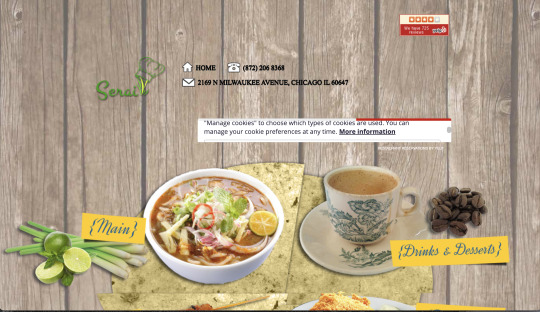
We see this online as well. While the old-web Geocities look and later Blingee MySpace-era swag have become aestheticized and fetishized, a kind of naive art for a naive time, a great many old websites have not received the same treatment. These are no less naive but they are harder to repackage or commodify because they are simple and boring. They are not "core" enough.
As with interiors, web datedness can be found in part or as a whole. For example, sites like Imgur or Reddit are not in and of themselves dated but they are full of remnants, of 15-year old posts and their "you, sir, have won the internet" vernacular that certainly are. Other websites are dated because they were made a long time ago by and for a clientele that doesn't have a need or the skill to update (we see this often with Web 2.0 e-commerce sites that figured out how to do a basic mobile page and reckoned it was enough). The next language of datedness, like the all-white landlord-special interior, is the default, clean Squarespace restaurant page, a landing space that's the digital equivalent of a flyer, rarely gleaned unless someone needs a menu, has a food allergy or if information about the place is not available immediately from Google Maps. I say this only to maintain that there is a continuity in practices between the on- and off-line world beyond what we would immediately assume, and that we cannot blame everything on algorithms.
But now you may ask, what is, exactly, datedness? Having spent two days in a distinctly dated hotel room, I've decided to sit in utter boredom with the numinous past and try and pin it down.

II.
I am in an obscure place. I am in Saint-Georges, Quebec, Canada, on assignment. I am staying at a specific motel, the Voyageur. By my estimation the hotel was originally built in the late seventies and I'd be shocked if it was older than 1989. The hotel exterior was remodeled sometime in the 2000s with EIFS cladding and beige paint. Above is a picture of my room, which, forgive me, is in the process of being inhabited. American (and to a lesser extent Canadian) hotel rooms are some of the most churned through, renovated spaces in the world, and it's pretty rare, unless you're staying in either very small towns or are forced by economic necessity to stay at real holes in the wall, to find ones from this era. The last real hitter for me was a 90s Day's Inn in the meme-famous Breezewood, PA during the pandemic.
At first my reaction to seeing the room was cautionary. It was the last room in town, and certainly compared to other options, probably not the world's first choice. However, after staying in real, genuine European shitholes covering professional cycling I've become a class-A connoisseur of bad rooms. This one was definitively three stars. A mutter of "okay time to do a quick look through." But upon further inspection (post-bedbug paranoia) I came to the realization that maybe the always-new brainrot I'd been so critical of had seeped a teeny bit into my own subconscious and here I was snubbing my nose at a blessing in disguise. The room is not a bad room, nor is it unclean. It's just old. It's dated. We are sentimental about interiors like this now because they are disappearing, but they are for my parents what 2005 beige-core is for me and what 2010s greige will become for the generation after. When I'm writing about datedness, I'm writing in general using a previous era's examples because datedness, by its very nature, is a transitional status. Its end state is the mixed emotion of seeing things for what they are yet still appreciating them, expressed here.

Datedness is the period between vintage and contemporary. It is the sentiment between quotidian and subpar. It is uncurated and preserved only by way of inertia, not initiative. It gives us a specific feeling we don't necessarily like, one that is deliberately evoked in the media subcultures surrounding so-called "liminal" spaces: the fuguelike feeling of being spatially trapped in a time while our real time is passing. Datedness in the real world is not a curated experience, it is only what was. It is different from nostalgia because it is not deliberately remembered, yearned for or attached to sweetness. Instead, it is somehow annoying. It is like stumbling into the world of adults as a child, but now you're the adult and the child in you is disappointed. (The real child-you forgot a dull hotel room the moment something more interesting came along.) An image of my father puts his car keys on the table, looks around and says, "It'll do." We have an intolerance for datedness because it is the realization of what sufficed. Sufficiency in many ways implies lack.

However, for all its datedness, many, if not all, of the things in this room will never be seen again if the room is renovated. They will become unpurchaseable and extinct. Things like the bizarrely-patterned linoleum tile in the shower, the hose connecting to the specific faucet of the once-luxurious (or at least middling) jacuzzi tub whose jets haven't been exercised since the fall of the Berlin Wall. The wide berth of the tank on the toilet. There is nothing, really, worth saving about these things. Even the most sentimental among us wouldn't dare argue that the items and finishes in this room are particularly important from a design or historical standpoint. Not everything old has a patina. They're too cheaply made to salvage. Plastic tile. Bowed plywood. The image-artifacts of these rooms, gussied up for Booking dot com, will also, inevitably disappear, relegated to the dustheap of web caches and comments that say "it was ok kinda expensive but close to twon (sic)." You wouldn't be able to find them anyway unless you were looking for a room.

One does, of course, recognize a little bit of design in what's here. Signifiers of an era. The wood-veneer of the late 70s giving way to the pastel overtones of the 80s. Perhaps even a slow 90s. The all-in-one vanity floating above the floor, a modernist basement bathroom hallmark. White walls as a sign of cleanliness. Gestures, in the curved lines of the nightstands, towards postmodernity. Metallic lamp bases with wide-brimmed shades, a whisper of glamor. A kind of scalloped aura to the club chairs. The color teal mediated through hundreds if not thousands of shoes. Yellowing plastic, including the strips of "molding" that visually tie floor to wall. These are remnants (or are they intuitions?) of so many movements and micromovements, none of them definite enough to point to the influence of a single designer, hell, even of a single decade, just strands of past-ness accumulated into one thread, which is cheapness. Continuity exists in the materials only because everything was purchased as a set from a wholesale catalog.

In some way a hotel is supposed to be placeless. Anonymous. Everything tries to be that way now, even houses. Perhaps because we don't like the way we spy on ourselves and lease our images out to the world so we crave the specificity of hotel anonymity, of someplace we move through on our way to bigger, better or at least different things. The hotel was designed to be frictionless but because it is in a little town, it sees little use and because it sees little use, there are elements that can last far longer than they were intended and which inadvertently cause friction. (The janky door unlocks with a key. The shower hose keeps coming out of the faucet. It's deeply annoying.)
Lack of wear and lack of funds only keep them that way. Not even the paper goods of the eighties have been exhausted yet. Datedness is not a choice but an inevitability. Because it is not a choice, it is not advertised except in a utilitarian sense. It is kept subtle on the hotel websites, out of shame. Because it does not subscribe to an advertiser's economy of the now, of the curated type rather than the "here is my service" type, it disappears into the folds of the earth and cannot be searched for in the way "design" can. It can only be discovered by accident.

When I look at all of these objects and things, I do so knowing I will never see them again, at least not all here together like this, as a cohesive whole assembled for a specific purpose. I don't think I'll ever have reason to come back to this town or this place, which has given me an unexpected experience of being peevish in my father's time. Whenever I end up in a place like this, where all is as it was, I get the sense that it will take a very long time for others to experience this sensation again with the things my generation has made. The machinations of fashion work rapaciously to make sure that nothing is ever old, not people, not rooms, not items, not furniture, not fabrics, not even design, that old matron who loves to wax poetic about futurity and timelessness. The plastic-veneered particleboard used here is now the bedrock of countless landfills. Eventually it will become the chemical-laced soil upon which we build our condos. It is possible that we are standing now at the very last frontier of our prior datedness. The next one has not yet elided. It's a special place. Spend a night. Take pictures.
If you like this post and want more like it, support McMansion Hell on Patreon for as little as $1/month for access to great bonus content including a discord server, extra posts, and livestreams.
Not into recurring payments? Try the tip jar! Student loans just started back up!
4K notes
·
View notes
Text
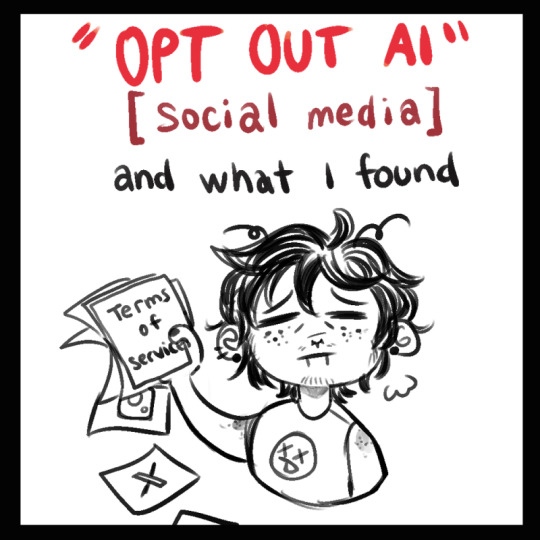
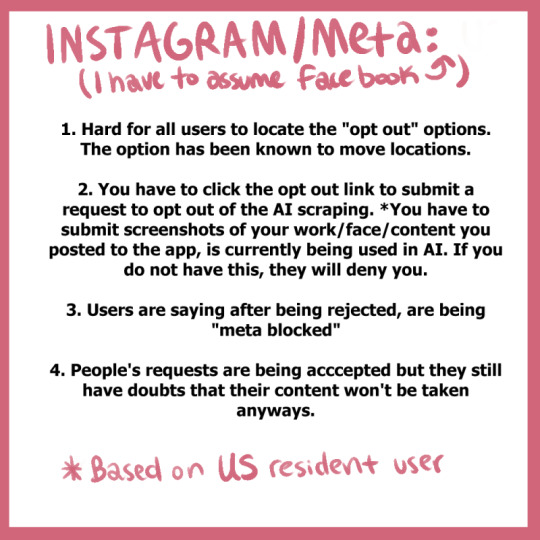
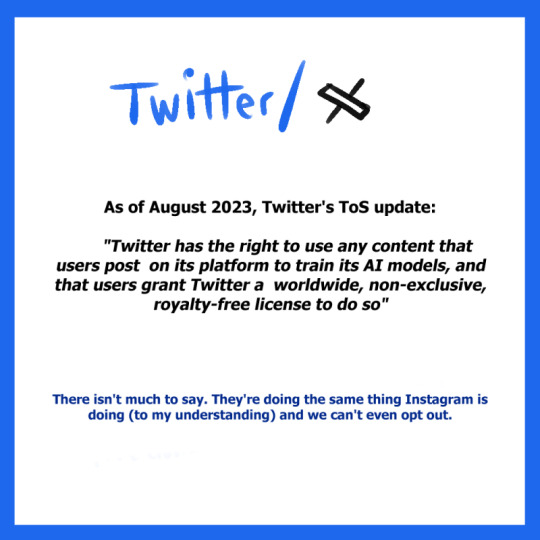
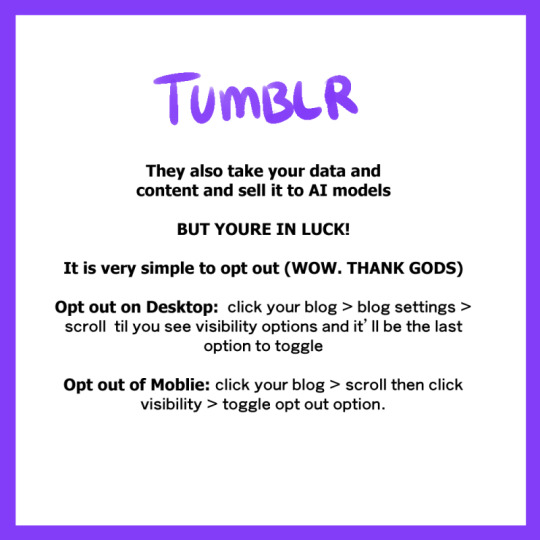
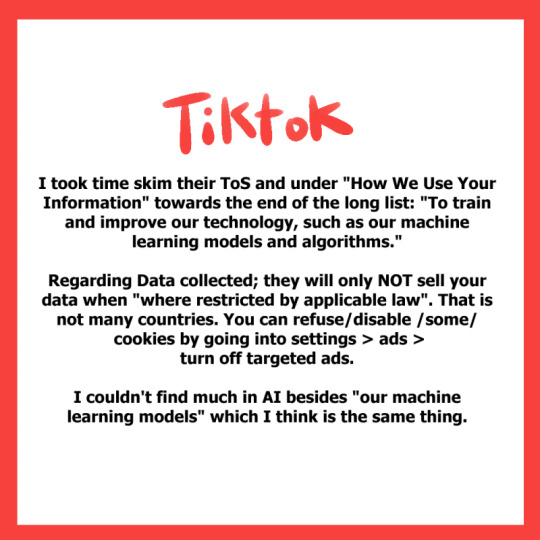
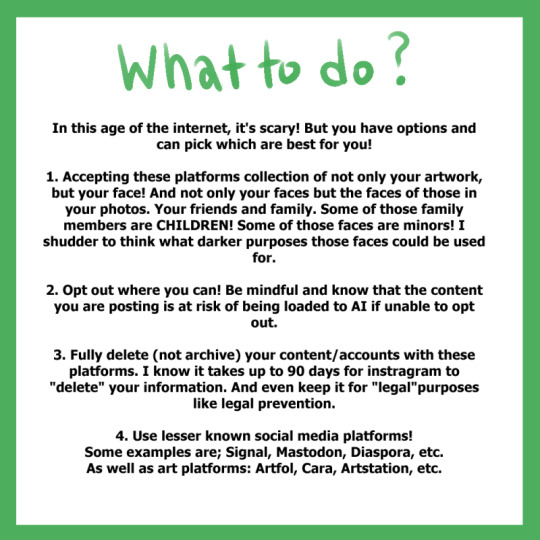
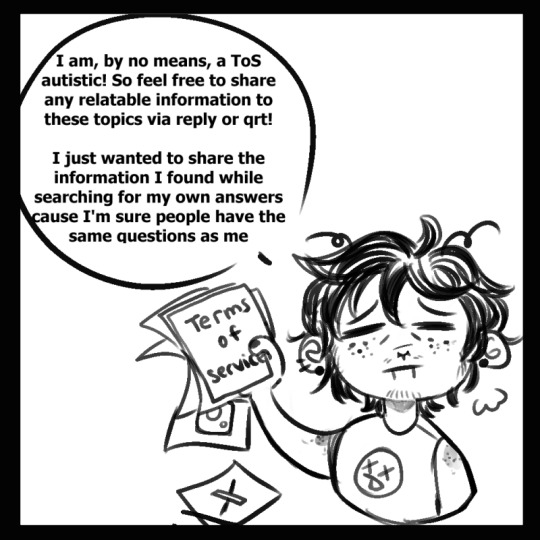
I spent the evening looking into this AI shit and made a wee informative post of the information I found and thought all artists would be interested and maybe help yall?
edit: forgot to mention Glaze and Nightshade to alter/disrupt AI from taking your work into their machines. You can use these and post and it will apparently mess up the AI and it wont take your content into it's machine!
edit: ArtStation is not AI free! So make sure to read that when signing up if you do! (this post is also on twt)
[Image descriptions: A series of infographics titled: “Opt Out AI: [Social Media] and what I found.” The title image shows a drawing of a person holding up a stack of papers where the first says, ‘Terms of Service’ and the rest have logos for various social media sites and are falling onto the floor. Long transcriptions follow.
Instagram/Meta (I have to assume Facebook).
Hard for all users to locate the “opt out” options. The option has been known to move locations.
You have to click the opt out link to submit a request to opt out of the AI scraping. *You have to submit screenshots of your work/face/content you posted to the app, is curretnly being used in AI. If you do not have this, they will deny you.
Users are saying after being rejected, are being “meta blocked”
People’s requests are being accepted but they still have doubts that their content won’t be taken anyways.
Twitter/X
As of August 2023, Twitter’s ToS update:
“Twitter has the right to use any content that users post on its platform to train its AI models, and that users grant Twitter a worldwide, non-exclusive, royalty-free license to do so.”
There isn’t much to say. They’re doing the same thing Instagram is doing (to my understanding) and we can’t even opt out.
Tumblr
They also take your data and content and sell it to AI models.
But you’re in luck!
It is very simply to opt out (Wow. Thank Gods)
Opt out on Desktop: click on your blog > blog settings > scroll til you see visibility options and it’ll be the last option to toggle
Out out of Mobile: click your blog > scroll then click visibility > toggle opt out option
TikTok
I took time skim their ToS and under “How We Use Your Information” and towards the end of the long list: “To train and improve our technology, such as our machine learning models and algorithms.”
Regarding data collected; they will only not sell your data when “where restricted by applicable law”. That is not many countries. You can refuse/disable some cookies by going into settings > ads > turn off targeted ads.
I couldn’t find much in AI besides “our machine learning models” which I think is the same thing.
What to do?
In this age of the internet, it’s scary! But you have options and can pick which are best for you!
Accepting these platforms collection of not only your artwork, but your face! And not only your faces but the faces of those in your photos. Your friends and family. Some of those family members are children! Some of those faces are minors! I shudder to think what darker purposes those faces could be used for.
Opt out where you can! Be mindful and know the content you are posting is at risk of being loaded to AI if unable to opt out.
Fully delete (not archive) your content/accounts with these platforms. I know it takes up to 90 days for instagram to “delete” your information. And even keep it for “legal” purposes like legal prevention.
Use lesser known social media platforms! Some examples are; Signal, Mastodon, Diaspora, et. As well as art platforms: Artfol, Cara, ArtStation, etc.
The last drawing shows the same person as the title saying, ‘I am, by no means, a ToS autistic! So feel free to share any relatable information to these topics via reply or qrt!
I just wanted to share the information I found while searching for my own answers cause I’m sure people have the same questions as me.’ \End description] (thank you @a-captions-blog!)
4K notes
·
View notes
Text
My brothers in Dragon Age (and everyone else) coming over here from TikTok you gotta reblog art you think is cool - you gotta reblog stuff. Not just art but gifs and writing and meta/analysis posts, literally anything you think is cool reblog it. Your blog is like a big old scrapbook that you pass around during show and tell
The op can see any tags/comments you make on their posts, I have lost count of the times I've seen people just starting a mile long argument in mine before I block both people involved but the same can be said for the amount of tags that have made me genuinely laugh and smile on posts that are my own and ones that I've reblogged from somebody else as well
You gotta filter tags and you've gotta block people left right and center, there's no algorithm and you're the only one who curates your space. Cringe is not a thing here and Tumblr is not a popularity contest
Okay that's all peace and love here is a nug in some grass to look at

#You can block me at any time!!! I've crawled into this fandom space like bathroom ceiling mold! I get it! I get it!!#tiktok#tiktok ban#dragon age veilguard#dragon age#dragon age the veilguard#veilguard#a bee psa
535 notes
·
View notes
Note
WHY CANT I REPOST YOUR ARTHSBHSJSBSJZJ
perhaps you are confusing reblog & repost?
Reblogs 🔁 are good and encouraged! They’re tumblr’s built-in way to share posts. It’s the recommended way to curate your blog space and support creators on tumblr, especially since most people here prefer to not use the algorithm!
Repost ❌ for most of tumblr’s history has meant “downloading/screenshotting the image and reuploading it to tumblr or another website” which is art theft and makes me very sad. Especially in the age of AI, I can never be sure what’s happening to my art where I’m not monitoring it, so even if it’s credited and linked back to me I still don’t allow reposts.
It doesn’t help that twitter and bluesky are using “repost” now to mean something more equivalent to tumblr’s reblogs.
472 notes
·
View notes
Text
Streaming in Kaos
Well, it happened. I can't say that I'm surprised that KAOS has been cancelled by Netflix. I am a little surprised at the speed at which it was axed. Only a month after it aired, and it's already gone.
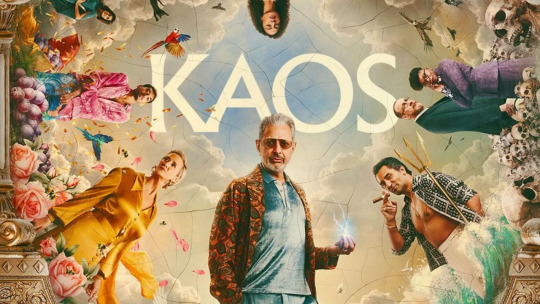
That has me wondering if the decision to cancel was made before the show even aired. We have to remember that marketing is the biggest cost after production. If the Netflix brass looked at the show and either decided (through audience testing, AI stuff or just their own biases) that it wasn't going to be a Stranger Things-level hit, they probably chose at that moment to slash its marketing budget.
That meant there was pretty much no way that KAOS was ever going to hit the metrics Netflix required of it to get a season 2.
What makes me so angry about this (other than the survival of a show relying on peoples' biases or AI) is that it becomes a self-fulfilling prophecy. If you decide before a show is ever going to air that it won't be a success, then it probably won't be. If you rely on metrics and algorithms and AI to analyze art, you will never let something surprise you. You'll never let it grow. You'll never nurture the cult hits of the future or the next franchise.
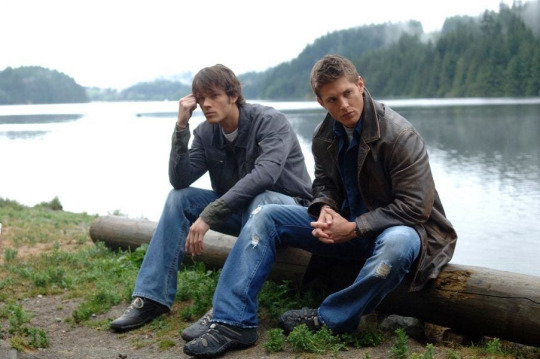
Netflix desperately needs people behind the scenes that believe in stories and potential over metrics. Nothing except the same old predictable dreck is ever going to be allowed to survive if you don't believe in the stories you're telling.
The networks and streamers have a huge problem on their hands. They need big hits and to build the franchises of the future to sustain their current model (which is horribly broken.) But people have franchise fatigue and aren't showing up for known IPs like they used to. The fact that Marvel content is definitely not a sure thing anymore is a huge canary in the coal mine for franchise fatigue. People aren't just tired of Marvel, they're tired of the existing worlds both on the big screen and the small one. Audiences are hungry for something new.

It is telling that the most successful Marvel properties of the last few years have been the ones that do something different. Marvel is smart to finally pull out The X-Men because that is a breath of fresh air and something people are hungry to see more of.
There's pretty much no one behind the scenes (except for maybe AMC building The Immortal Universe) that is committing to really taking the time to build these new worlds. Marvel built the MCU by playing the long game. That paid dividends for a solid decade even if it's dropping off now. That empire was built not with nostalgia for existing IP (don't forget the MCU was built with B and C tier heroes) but with patience. Marvel itself seems to have forgotten this in recent years.
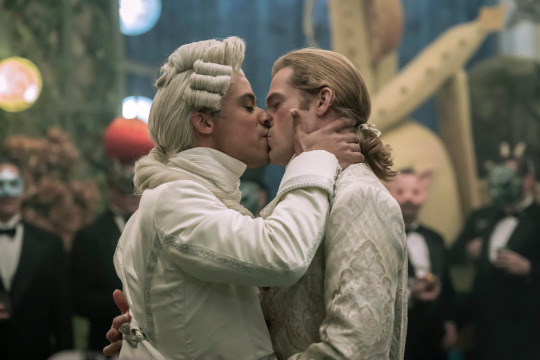
Aside from that, I think people really want stories that aren't connected to a billion other things. That takes commitment on the part of the audience to follow and to get attached to. People WANT three to five excellent seasons of a show that tells its own story and isn't leaving threads out there for a dozen spinoffs. We're craving tight storytelling.
KAOS could have been that. Dead Boy Detectives could have been that. So could Our Flag Means Death, Lockwood and Co, Shadow and Bone, The Dark Crystal: Age of Resistance, Willow, and a dozen other shows with great potential or were excellent out of the gate.
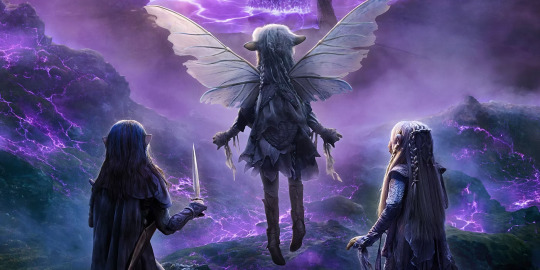
If you look at past metrics, you only learn what people used to like, not what they want now. People are notoriously bad about articulating what they want, but boy do they know it when they see it. Networks have to go back to having a dozen moderate successes instead of constantly churning through one-season shows that get axed and pissing off the people who did like it in a hamfisted attempt to stumble on the next big thing.
The networks desperately need to go back to believing in their shows. Instead, they keep cutting them off at the knees before they ever get a chance because some algorithm told them the numbers weren't there.
#fandom commentary#fandom meta#streaming#streaming collapse#netflix#kaos#kaos on netflix#dead boy detectives#interview with the vampire#marvel#mcu#the dark crystal#our flag means death#cancellation#netflix cancellation
537 notes
·
View notes
Note
Hi Neil
Do you think its possible to get recognition as an artist (of any kind, singer/songwriter, author, painter, video game creator) without also being good at marketing and social media?
It feels like these days, success and recognition is all dependent on how present you are, constantly advertising a product even if you aren’t selling it.
I just wish I could be one of those people who publicize a hit game or hit book and dont interact online and comment on anything but people still see it and like it — because I just want to share my creations but with appreciation for it.
I know its “make art for yourself!” Which I do, but I want the art I make for myself to also make others happy and connect with my work. I just feel intimidated and uncomfortable by Big Social Media and Algorithms and Following Trends etc.
Then just make the art and don’t worry about it. I used to do Twitter because I loved doing Twitter. I’m only here on Tumblr because I enjoy being on Tumblr. I’m around a bit on Bluesky because the people seem nice.
Mostly what I miss are the online communities that existed when I was young, none of which were about advertising product and all of which were about connecting with like-minded others. I miss CompuServe and GEnie in particular.
I think the age of Social Media as advertising feels like it’s drawing to a close.
878 notes
·
View notes
Note
Hi Skyen, hope you're well! I'm seeking some advice and since you used to work doing mainly art commissions I figured asking you was worth a shot.
I'm a furry artist and I'm looking into doing commission work as a side gig while I finish animation college, and hopefully acquire enough experience/clients/notoriety to turn it into a full time job once I graduate.
Do you have any advice for someone literally just starting out with fresh accounts and zero following? Especially when it comes to reaching people and getting your first clients, and anything that one should take into account when working with NSFW specifically. Also advice for pricing your work is always useful 😅
No need to answer obvs but I'd appreciate your viewpoint if you want to share!
Got 2 asks on this exact subject so I'll write up what advice I can. One big caveat: I haven't worked as a commission artist for like half a decade at this point, and this job has a tendency to change fast, do not take anything I say as gospel. This is advice from a limited perspective, be critical of what I say and trust your peers and the people you are in community with before you trust me.
building audience
Step one is getting people to notice the artwork you create. Literally nothing else can happen until you have eyeballs on your work, and the most consistent and reliable way to make that happen is fanart. Ideally you'd want to produce fanart in a fandom you are personally engaged with and passionate about and familiar with, and which also has a sizeable community whose attention can help you build recognition and a base of followers.
This isn't always possible, and there's many a working artist who creates work for fandoms not out of deep personal connection, but because the fandom is large and relevant and a good way to capture the goodwill of algorithms and content feeds.
This approach has some downsides. For one, genuine fans can usually tell when someone's engagement with Their Thing is shallow, and for another it can be deeply creatively exhausting to chase the algorithm. I don't recommend this approach, but it is a valid means of building a business.
Another important consideration, especially when you are early in your career, is that volume tends to trump quality. Every artist will eventually learn that their shitty joke-doodle they sh*t out in ten minutes on a whim will get a billion reposts, and their complex personal work that took eight weeks to finish gets 2 likes from their closest mutuals and a comment from a bot saying "wow!"
In the age of the algorithm, what machines and for you pages value is a consistent, high-volume of output that generates user engagement. You will generally get further, faster, by producing a lot of work than you will producing great work. Again, this can be rough on your mental state, and a fast way to burn the fuck out, so please be careful and mind your health before all else.
The best way to build something that will last is to build your audience in communities and around fandoms and themes and ideas you genuinely care about and enjoy exploring and interacting with. Being your authentic self and creating work from your authentic interest is generally both healthier and long-term better for your career than trend-chasing. Treat trend-chasing and volume > quality output as tools in your toolbox, as creative and business decisions you can make to achieve a specific purpose, never ever EVER let them become the center of your praxis or your philosophy. Never ever EVER allow the Numbers™ to be your source of validation and accomplishment.
building business
Ok, so you've got eyes on your work. You've got some followers. How the hell do you get them to commission you?
Well, again, by demonstrating a capacity to create kinds of art for which there is demand. In the furry community, there's brisk trade in things like ref sheets and character design, for example. For most fandoms, ship art is a product which tends to be in demand. Being able to do really good expression sheets is a marketable skill. Being able to create compelling and clear emotes for streamers and creators is a marketable skill.
Showing the capacity to work in a wide range of styles is valuable. Showing the capacity to work in a wide range of genres is valuable. If you can do both comedy and romance your appeal expands. If you can do shonen-like action and angst as well, it expands again.
Equally, being incredibly good at a specific niche is valuable as well. Focusing hard on an under-served niche of work can give you a lot of opportunities to be the Go To person for that specific kind of thing.
Perhaps the hardest part of all of this is marketing yourself. Not only showing that you have the skills, but actively informing your audience that you are available, eager and willing to practise your skill for a fee. You have to sell yourself. It sucks, but you have to do it. You have to advertise what you can do, and you have to suffer the rejection and annoyance that comes along with doing that.
You have to ask people to commission you. You have to raise your hand and demand attention. It's not fun, but it's business.
Walking the line between self-promotion and being a person is hard. I can't help you that much with it, it's a very personal balance to find. Stay in touch with your soul, but kill the part that cringes at yourself.
Ultimately, you best marketing asset is your portfolio. Every time you do work, show it off. Repost it, retweet it, spread it around. If someone is happy with what you've made for them, do your best to make sure that other people see that happiness. Ask your clients (politely) to tag you when they share your work.
Oh, and for the love of god, sign everything you create, slap watermarks on anything that's likely to get reposted, and make it impossible for someone not to find your business email on your profile.
building network
If you're a commission artist, you are in community with other commission artists. You share interests, you share experiences, you share needs.
Practise solidarity. Absolutely seek out professional peers to help your business, but equally seek out opportunities to help them with theirs. If someone comes to you for art and you don't have commission slots open, point them at a colleague who you know can do the work too. Gas up your peers and spread their work.
Be a symbiote, not a parasite. Respect the craft of your peers, and don't chase celebrities and big names in the hope of coasting on their coattails. It will fail.
smut
If you're a working artist, at some point you have to reckon with smut and r34.
These genres are excellent sources of income, and fertile ground to build a business and network of customers. BUT. Do not ever make the mistake of thinking that they are "the easy way" or a shortcut. Do not ever make the mistake of thinking you can simply offer to draw tiddies and rake in the cash.
It's work and graft same as literally any other form of labor, it's challenging on both a technical and creative level, and the audience can sense if you're looking down on them. If you approach this from a position of shame, of "eugh, I'm debasing myself by doing this for rent money," it will not work, and you will lose standing and respect in the eyes of every peer whose support you need to succeed.
Just as in all other forms of creativity, if you treat the audience as morons who will slurp up whatever slop you serve them, then you will attract clientele that agrees with you, and you will deserve the misery they will inflict upon you.
If you are going to work in smut, establish your boundaries and enforce them. Know that good clients will feel safer and more comfortable with an artist who clearly states their red lines and earnest interests than they will with someone who tries to attract more clients by pretending to be open to work that they are actually uncomfortable with.
Never, ever, EVER let a client push you to create work you are not comfortable creating. It scars your soul in both the short and long term.
Also, when working with this kind of content, know the rules of payment processors and know how to hide the nature of your business from them. PayPal should never, EVER know the details of the content you sell with their service. Frankly, neither should your bank, most likely.
Look to your peers for advice and best practises about this. And be meticulous about your bookkeeping.
money
I want to tell you to charge at least minimum wage for your time. I want to tell you to charge substantially more than that, because your labor is specialized and highly skilled.
But the economic reality of commission work is that there is a crushing downwards pressure on the labor price of art, which has only been made more devastating by the rise of generative AI, and especially when you are a young artist just starting out, you're going to find yourself in a position where charging even minimum wage for your time will turn away a huge proportion of your potential customers.
Again, your portfolio will be the greatest argument for the value of your work, but you have to build that portfolio first, and very often that means doing a f*kton of work for not remotely enough pay until the pressure of demand finally works in your favor.
I don't condone or justify this state of affairs. It is horrid and I hate it, but I don't know how to fix it either.
Making a living from content creation of any kind requires you to get lucky, on top of working obscene hours and foregoing rest and vacations. It's not a safe or sensible plan for a career or paying your bills.
My sensible advice is to get a "normal" job you can survive doing, and do your creative work on the side, and resign yourself to the possibility that the creative work may never actually pay your bills.
And that is soul-crushing, but I cannot stomach pretending that hard work and gumption will guarantee anyone a decent living if they just try hard enough.
There are people who are better at every aspect of my work than I am, and they struggle harder and work for longer, and they will never see half the success I have, because I happened to get lucky, and they happened not to. It's wretched.
I'm not telling you not to chase your dreams. I'm telling you to do it with your eyes open, and with compassion for yourself first before all else.
All of this to say: I can't tell you what to charge for your work. It depends on everything from your competition to your niche to your genre to your community to your economic situation. You have to figure it out on your own.
All I can tell you is never forget that your work is worth more than the market will let you charge, and to raise your prices as soon and as much as you can. Try to reach at least minimum wage for your time as fast as possible.
in conclusion
Again, I haven't been a commission artist full time for a long time, please do not take any of this as gospel. Listen to your peers before you listen to me.
But trust me about the solidarity. It will save you when all else fails.
216 notes
·
View notes
Text
Insofar as I have a principled position on the matter- and I don’t, not really- it’s this: art does have the ability to alter our values and our way of interpreting the world. It’s absolutely a live grenade, and should be taken seriously as such.
Like, of course it does! Probably you can point to some book, some film, some story somewhere that touched you not just deeply but irrevocably. There are moments of aesthetic experience which give a before and after to our lives, just as surely as moments of extraordinary suffering or extraordinary joy can.
I’m lucky enough to have more than a few I can list off, personally. Profoundly transformative ones like Evelyn Waugh’s Brideshead Revisited or the music of John Cage, sure. But maybe even more interesting (tractable?) to me were small moments of grace like the one I found in the Dragonlance novels by Weis and Hickman: the dark wizard Raistlin Majere wove back and forth across the line between ‘hero’ and ‘villain’ in exactly such a way that, after reading his books at a young age, I immediately and quite distinctly overcame my fear of the dark.
What a wonderful thing for a book to do! I’d be hard-pressed to explain exactly how, if only because I’m such a different person now than I was then. Perhaps your own intuition will bridge the gap a bit. It was all tied up with this distinction between good and evil, you see, and with the ability to stare in to the face of evil things without flinching, to understand that they have contingency and history just like good things do, and to be in some sense in community with them.
That was a long, long time ago, and I don’t think my model of the world even has evil in it any more, not in the sense that I believed in it then. But my fear of the dark never came back, either.
I don’t believe for a minute that Weis and Hickman had any idea that they were giving me that gift in particular, nor did they have any sensible means to achieve such a goal even if they somehow wanted to. It wasn’t a transformation mediated by intent, you know? It didn’t reduce to an argument that I believed or disbelieved in some intellectual way, or to some specific controlled experience that the authors had planned for me.
Art is transformative, but not in the way that effective polemic is transformative. It doesn't (principally) reason with us or persuade us. Rather, I think art is dangerous for the same reasons that travel to a foreign country is dangerous, or a friendship with somebody new is dangerous. It threatens us by expanding our conscious history to include new categories of experience, that is, by changing the context in which we go about the business of living.
It's wrong to think of art mostly as a tug-of-war dragging hapless consumers from one ideology to another, with the victory going to whichever faction can fill the algorithm with mass-produced and doctrinally compliant stories clamoring endlessly for their views. Normalization has its power, don't get me wrong, but there will always be far greater power in a single glimpse over the horizon.
Think about Whoopi Goldberg's account of seeing Nichelle Nichol's Uhura on television:
“Well, when I was nine years old Star Trek came on. I looked at it and I went screaming through the house, ‘Come here, mum, everybody, come quick, come quick, there’s a black lady on television and she ain’t no maid!’ I knew right then and there I could be anything I wanted to be.”
Once. It took one time, and the walls fell away, and everything was possible. The fashions and approved styles may come and go with the seasons, but the outer perimeter of our experiences, and the sense of what the world could be, can only ever grow, and sometimes it grows by leaps and bounds in an instant.
I guess this is why I tend to think of censorship and control over media as basically quixotic. Sure, with enough energy you can control what's normal and what's public, but controlling what's possible is an exercise in futility on a grand scale. You can never win that fight, only lose it fast or slow.
We all have this remarkably unpredictable collection of soft places and hard places: some things in us that deform to match the shape of their environment, and other things that break us before they can bend. And we all try to find a way to make these strange shapes work within the limits of our own experience and the world as we understand it. Some of us thrive in communities and cultures where others die gasping, and some of us spend our entire lives trying to smash through excruciating barriers that others can't even detect.
Art is one of the things that expands those limits, gives the strange creature inside us a little bit of room to stretch and grow and find a space for the hard bits to arrange themselves as they need to be. But it can't do that without changing the soft parts as well, because the soft parts need external force to maintain their shape. Socialization and ideology can only weakly bind us, because they rely on deliberate and conscious pressures to conform; ignorance is stronger, because it denies us the choice altogether. Without art, you'll never really be able to learn what kind of animal you are, as opposed to the kind of person your world has told you to be. But art will change you, too, as discovery always will.
The life you have now has real value- great beauty, and great meaning. For all that you are defined in part by the walls of your cage, knowledge and new experiences are not something to accept lightly, and they can never be undone. All I can say, really, is that I've never once regretted it.
150 notes
·
View notes